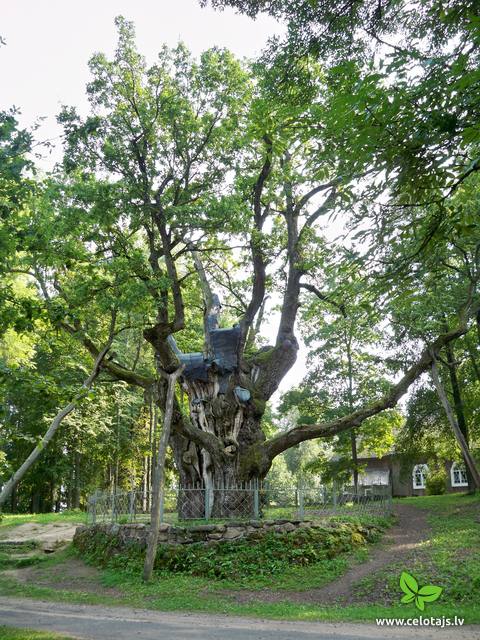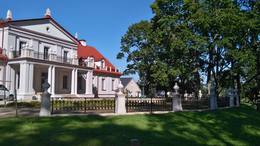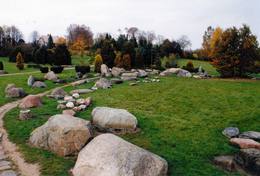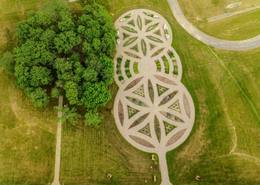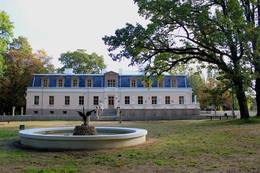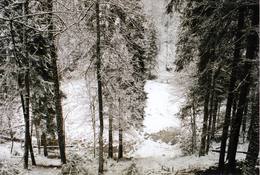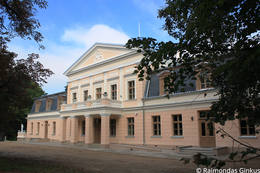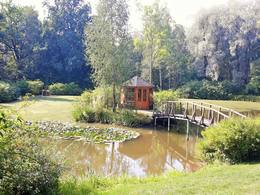Naturobjekte in Litauen
Was ist das Besondere an der Natur in Litauen?
Die Kurische Nehrung - ein sandiger, wüstenartiger Landstrich zwischen dem Ostseesee und dem Kurischen Einlass, die hügeligen Landschaften der Region Samogitia, die blauen Spiegellabyrinthe der Seen in der Region Aukštaitija, die Kiefernwälder in der Region Dzukija, Die Kurven des Nemuna-Flusstals und die vielen regionalen Naturparks, die nicht nur zum Schutz der Natur, sondern auch zur Erholung und zum Interesse der Menschen geschaffen wurden - dies sind die Naturwerte, die Gäste Litauens anziehen.
Handle verantwortungsbewusst - folge dem Grünen Rat!
| Überblick | Details |
|---|---|
|
Litauen
Kaunas juras regionalais parksKauņas jūras reģionālais parks (Kauno marių regioninis parkas) dibināts 1992. gadā. Tas ietver Nemunas HES uzpludināto posmu – lielāko Lietuvas ūdenskrātuvi no Kauņas līdz Piļonas (Piliuona) ciemam. Viena no nozīmīgākajām parka vērtībām ir ainava, kas veidojusies ilgā cilvēka un dabas mijiedarbībā. Parkā konstatētas 950 augu sugas, 600 dzīvnieku, t.sk. - 34 zivju sugas. Parka nozīmīgas dabas vērtības ir meži, augstie purvi, kadiķu audze. Parkā ir apskatāmi dažādu vēsturisko periodu liecinieki – senču pilskalni, Pažaislis klosteris, Kauņas cietokšņa Piektais forts, kā arī Rumšišķes (Rumšiškės) brīvdabas muzejs – viens no lielākajiem (195 ha) šāda veida muzejiem Eiropā. Vaišvīdavā (Vaišvydava) ir izveidots parka apmeklētāju centrs, parkā ir dabas takas, piemēram, Žiegždriai ģeoloģiskā taka un Dubravos izziņas taka. |
|
|
Litauen
SCHLOSSPARK ILZENBERGASDer Park des Gutes Ilzenbergas, so wie er heute besteht, geht auf eine Anlage der zweiten Hälfte des 19. Jahrhunderts zurück. Die Struktur wird durch das deutliche Relief zwischen den Seen Ilgis und Apvalasas geprägt. Bei der Rekonstruktion wurde Wert darauf gelegt, die räumliche Gliederung unverändert zu belassen. Der Park umfasst ein Territorium von 10 ha und besteht aus zwei Teilen. Zum einen das annähernd rechteckige Gelände am Herrenhaus, eingerahmt von einer Reihe Winterlinden und mit Grünanlagen aus einheimischen und fremdländischen Gehölzen. Zum anderen aus naturnahem, waldartigen Grünanlagen. Die größte in diesem Park wachsende Eiche wurde als staatlich geschütztes Naturerbe eingetragen. Dieser mächtige Baum hat einen Stammumfang von 6,3 m, einen Durchmesser von 2 m und eine Höhe von 30,5 m. |
|
|
Litauen
GUTSPARK STELMUZĖDer Park des Gutes Stelmužė wurde Mitte des 18. Jh. südlich vom See Stelmužė angelegt. Von allen Seiten führen gewundene Pfade zu der auf dem Hügel stehenden Jesus-Kreuz-Kirche. In der Baumschicht dominieren Linden, Ahorn, Ulmen, Birken, Fichten, Eschen, Kiefern. Am Fuß des Hügels befinden sich der Glücksbrunnen und man kann die Eichenallee entlang schlendern. Prunkstück ist aber zweifellos die Stelmužė-Eiche, die älteste und dickste in Litauen wachsende Eiche und sogar eine der ältesten Eichen in Europa. Man vermutet, dass der Baum etwa 1500-2000 Jahre alt ist, der Stammdurchmesser beträgt 3,5 m (um den Stamm zu umfassen benötigt am 8 bis 9 Leute), die Höhe 23 m. |
|
|
Litauen
HexenhügelEine große parabolische Düne mit einer Ausstellung der Holzskulpturen unter freiem Himmel, die der litauischen Mythologie gewidmet sind. Die Skulpturen haben litauische Meister der angewandten Kunst angefertigt. |
|
|
Litauen
The Salantai Regional ParkThe terrain in this territory was created during the Ice Age. There are the ancient river valleys of the Minija, Salantas and Erla rivers, along with groups of rocks.
|
|
|
Litauen
GUTSPARK SALOSDas Gutshaus Salos und der Park befinden sich auf der Insel im See Dviragis, die aus der Luft eine gewisse Ähnlichkeit mit der Landkarte Litauens hat. Auf der Ostseite von dem Gutshaus befindet sich der Park, der einer der ältesten Parks in Litauen ist. Bereits unter der Herrschaft derer von Radvila befand sich hier ein Waldpark, in dem die Bäume nicht gefällt wurden. Im Park dominierten einheimische Laubbäume: Ahorn, Linde, Esche, Pappel, die mittlerweile ein Alter von 200 Jahren erreicht haben. Der zum See hinabgehende Weg verband die Alle mit dem Parkweg am See entlang. Heute sind noch Fragmente der Grünanlagen und der Allee erhalten. |
|
|
Litauen
Cepkelu purvs (Cepkelių raistas)Lietuvas lielākais sūnu purvs, kura aizsardzības nolūkā ir izveidots Čepkeļu dabas rezervāts (Čepeklių gmatinis rezervatas). Tas izvietojies starp Dzūkijas nacionālā parka dienvidaustrumu daļu un Baltkrieviju. No Marcinkones pa smilšainu meža ceļu (~ 9 km turp - atpakaļ) ar kājām vai divriteni (arī nelielu tūrisma autobusu līdz 20 vietām) var nokļūt līdz purva malai, kur mežainās kāpās un purvā izveidota 1,5 km gara dabas taka un skatu tornis, no kura labi pārredzama purva rietumdaļa. Pirms došanās uz Čepkeļu purvu, ir jāreģistrējas Dzūkijas nacionālā parka apmeklētāju centrā (Šilagėlių gatve 11), kas meklējams aiz dzelzceļa pārbrauktuves. Te apskatāma neliela nacionālajam parkam un rezervātam veltīta ekspozīcija. |
|
|
Litauen
Platelu ezers (Platelių ezeras)Nacionālā parka galvenā ainavas dominante. Ezers ir ~ 8,4 km garš un līdz 3,3 km plats. Tā austrumu krasti pārsvarā ir ar mežiem apauguši, ziemeļrietumu krasts – purvains, bet rietumu krastā parādās apdzīvotas sētas un simpātiskā Plateļu (Plateliai) pilsētiņa, kur meklējamas skaistākās skatu vietas. Ezera krastos ir labi attīstīta infrastruktūra - tūristu mītnes, ēdināšanas uzņēmumi (Plateļos), ūdenssporta un atpūtas inventāra noma. Ūdens dzidruma dēļ, Plateļu ezeru ir iecienījuši zemūdens niršanas entuziasti. Ezerā ir vairākas salas, no kurām interesanta ir Pils salas (Pilies sala), uz kuras no 15. – 16. gs. atradās muiža. Pastāv uzskats, ka senie Plateļu apkārtnes iedzīvotāji sākotnēji ir dzīvojuši uz salas, kuru ar krastu savienojis uz pāļiem celts tilts. Jāpiemin, ka 15 gs. pirmoreiz pieminētā Plateļu pilsētiņa atradusies uz Šventorkalņa (Šventorkalnis) kalna. Apkārt Plateļu ezeram ir izveidots ~ 24 km garš velomaršruts. Tā ir ļoti laba iespēja iepazīt parku videi un ceļotāja veselībai draudzīgā veidā. |
|
|
Litauen
MUSEUM BALTISCHER KRÄUTER2014 wurde unter Vermittlung des Botanischen Gartens der Universität Šiauliai ein Museum mit den genetischen Ressourcen der baltischen Kräuter angelegt. Den Besucher erwartet ein 85 m langes und 40 m breites Gelände mit einer Fläche von 0,34 ha. |
|
|
Litauen
The Neries Regional ParkThis territory was established to protect the lovely central section of the Neries River, local species, and Lithuania’s largest oak forest.
|
|
|
Litauen
Kurisches HaffDas beinah 100 km langes und bis zu 36 km breites aus dem Süßwasser bestehende Haff, das im Norden mit der Ostsee verbunden ist. Das Haff trennt vom Merr die eindrucksvolle Kurische Nehrung. Ins Kurische Haff mündet der größte Fluss Litauens Nemunas ein. |
|
|
Litauen
The Kurtuvėnai Regional ParkThis is a small area with lots of different terrains – high hillocks, distinct river valleys, thermal streams, continental dunes, etc.
|
|
|
Lietuva
Žagares reģionālais parksŽagares reģionālais parks organizē dažādas ekskursijas, izglītojošas programmas bērniem un senioriem un jauniešu nometnes. Žagare jau sen ir pazīstama ar savu īpašo ķiršu šķirni, kuru Latvijā pazīst ar nosaukumu ‘Latvijas zemais’, bet lietuvisko nosaukumu varētu tulkot kā ‘Žagares ķirši’. Tai ir vairākas variācijas, kas atšķiras ar dažādu nogatavošanās laiku, ražīgumu, augļu koku formu un citam pazīmēm. Līdz pat mūsdienām šie ķirši aug gandrīz ikvienās mājās un ir kā ekskluzīvs Žagares simbols. |
|
|
Lietuva
Degumi Kuršu kāpāBraucot no Kopgaļa uz Jodkranti (Juodkrantė), autoceļš „uzskrien" Lāča galvas kāpā (Meškos galvos kopa), kur kreisajā (austrumu) pusē paveras dīvains skats ar sausiem kalnu priežu Pinus montana stumbriem, kas atgādina spocīgu pasaku mežu. Šeit 2006. g. pavasarī notika t.s. gadsimta ugunsgrēks, kā rezultātā izdega simtgadīgs priežu mežs 235 ha platībā. Vietas apskatei ir izveidota koka laipa. |
|
|
Lietuva
Veisieji reģionālais parksVeisieji reģionālais parks (Veisiejų regioninis parkas) veidots (1992.g.) Sudavas augstienes (Sūduvos aukštuma) ainavu, bioloģiskās daudzveidības un kultūras pieminekļu aizsardzībai. Viena no parka bagātībām ir ezeri, kuru iegarenās formas liecina par ledāja darbības rezultātu. Pēdējā apledojuma laikā šeit atradusies ledāja mala. Ezerus (kopā – 37) ieskauj lielāki meža masīvi uz kontinentālām (iekšzemes) kāpām, kas piemēroti atpūtai dabā, dabas vērošanai, ogošanai un sēņošanai. Parkā ir iekārtotas peldvietas, kur patīkami gremdēties vasaras tveicē, izveidotas dabas takas, bet mazās upītes, kas savieno ezerus, ir piemērotas braucieniem ar kanoe laivām. Veisieji reģionālā parka teritorijā ir liela augu un dzīvnieku daudzveidība. Šeit tiek aizsargātas arī tādas retas sugas kā Eiropas kokuvarde Hyla arborea (parka simbols), purva bruņurupucis Emys orbicularis, dažādas orhideju sugas u.c. |
|
|
Lietuva
Nemunas loku reģionālais parksNemunas loku reģionālais parks (Nemuno kilpų regioninis parkas) ir dibināts 1992. g. un tā mērķis ir augu, dzīvnieku, ainavas un ģeoloģisko dabas pieminekļu aizsardzība. Parks ietver piecus lielus Nemunas upes lokus, kuru centrā atrodas Birštonas – viens no nozīmīgākajiem Lietuvas kūrortiem. Nemunas loku stāvajos krastos vietām redzami iespaidīgi nogulumiežu atsegumi. No dabas daudzveidības un ainavas viedokļa nozīmīgas ir arī Nemunas pieteku dziļās gravas. Parkā sastopami veci nogāžu un gravu meži. Punes (Punia) un Prienu (Prienai) mežos aug Lietuvā augstākie koki. Kopumā parkā ir konstatētas 973 augu un 1713 dzīvnieku (zīdītāji, putni, abinieki, rāpuļi, kukaiņi u.c.) un 505 sēņu sugas. Kā nozīmīgi kultūras tradīciju turpinātāji ir jāpiemin Prienu kokapstrādes meistari, kas gatavo koka krustus. |
|
|
Lietuva
Aukštadvara reģionālais parksPauguriem un ezeriem bagāta teritorija Dzūkijas augstienes Z daļā. Interesantākā tūristu piesaiste ir Velna dobe (Velnio duobė) – līdz 40 m dziļa un līdz 200 m plata piltuvveida bedre, kuras izcelsmi vairumā gadījumu saista ar ledāja darbību.
|
|
|
Lietuva
LadakalnisJau minētā izziņas taka (no ziemeļu puses) savieno Ginuču pilskalnu ar Ladakalni. Tas ir pieejams arī no rietumu puses, kur izveidots autostāvlaukums un kāpnes (ir padomāts arī par cilvēkiem ar īpašām vajadzībām). No Ladakalna plakuma paveras (īpaši, pēc pēdējās attīrīšanas) viena no skaistākajām nacionālā parka ainavām uz vairākiem ezeriem un Augštaitijas augstienes pauguraini. Stāsta, ka no Ladakalna var redzēt sešus ezerus? Redzamo ezeru skaits var atšķirties bezlapu un veģetācijas periodā. Paņemiet karti un pārskaitiet! Pastāv uzskats, ka šis ir sens pagānu kulta kalns, kur upurēja dievietei - pasaules radītājai Ladai. |
|
|
Lietuva
Seredžiaus pilskalnsViens no ainaviskākajiem Nemunas pilskalniem ar skaistu skatu uz upes ieleju. 13. – 14. gs. šeit atradās militārs nocietinājums (nav saglabājies). |
|
|
Lietuva
Žagares muižas parksŽagares muižas parks – viens no krāšņākajiem un arhitektūras ziņā interesantākajiem parkiem Lietuvā. Muižas parks 1898. – 1900. gadā rekonstruēts un paplašināts pēc ievērojamā dendrologa G.F.Kuphalda projekta. Parkā iestādīti vairāk kā 200 šķirņu stādu. Vairāk kā 100 no tiem aug vēl joprojām. Parkā līdz šim saglabājušies dažādi ceļi, takas, par kurām staigājot var izjust parka varenību un skaistumu. Parkā izveidota dendroloģiska taka, kurā atzīmēta un piedāvāta informācija par 15 retiem kokiem. |
|
|
Lietuva
Botānikas takaKaut arī Augštaitijas nacionālo parku uzskata par floristiskā ziņā ļoti bagātu teritoriju, šī ir vienīgā vieta, kur varam iepazīt augu valsts bagātību. To īstenot palīdz takas malās izvietotie informācijas stendi. 3,8 km garās lokveida takas sākums ir meklējams Palūšē, Lūšu (Lūšiai) ezera galējā austrumu punktā. Taka ved gar ezera krastu, mežainām kāpām, nelielu strautu ielejām un pa purvāju. Nenomaldīties palīdz krāsu marķējums uz koku stumbriem. |
|
|
Lietuva
Šarneles (Zviedru) pilskalns (Šarnelės (Švedų) piliakalnis)Viens no iespaidīgākajiem nacionālā parka pilskalniem, kura piekājē atradusies senpilsēta. Arheoloģisko izrakumu gaitā te atrastas kuršu senlietas. Tiesa, mežs un biezais augājs traucē uztvert šī nozīmīgā arheoloģijas pieminekļa patiesos apjomus un formu. Uz pilskalnu vasarās ved izpļauta taka. Ja esat Žemaišu Kalvarijas pusē un atliek brīvs brīdis, tad savā maršrutā var iekļaut arī šo apskates objektu. |
|
|
Lietuva
Pluņģes muižas parksPlunge ir slavena ar savu kunigaiša Oginska parku. Jauktā tipa 18. – 19. gadsimta parks izveidots žemaiču svētā meža - upurkalna vietā. Parka lepnums – viens no Lietuvas vecākajiem un lielākajiem – Pērkona ozols, leģendām apvītā Raudošā liepa, Piecstumbru osis. Pēc kunigaiša M. Oginska pavēles tika izrakti septiņi dīķi ar kaskādēm, kurus savieno akmens tiltu slūžas. Blakus plūstošā Babrungo upe piešķir parkam īpaši ainavisku skatu. |
|
|
Lietuva
Izidora Navidanska botāniskais parksTas ir viens no pirmajiem Lietuvas botāniskajiem parkiem. 1928.gadā I.Navidanskas, kuram tolaik bija vien 16 gadu, uzsāka parka veidošanu. 1965.gadā parku nodēvēja par Žemaitijas botānisko parku. Izidors kopā ar dēlu Rapolu, kurš šobrīd ir parka īpašnieks, turpināja paplašināt parku. |
|
|
Lietuva
Kuršu kāpu nacionālais parksVeidots Kuršu kāpas (lielākais kāpu veidojums Baltijas valstīs), piekrastes, biotopu, sugu, kultūrvēsturiskā mantojuma un kurortoloģisko resursu aizsardzībai. Vienīgā vieta Baltijā, kur tik lielā teritorijā var apskatīt klajus kāpu smiltājus, kas joprojām ir aktīvi un vēja ietekmē veido t.s. eolās reljefa formas. Te atrodas Baltijā vienīgais Jūras muzejs un Delfinārijs. |
|
|
Lietuva
Ginuču pilskalns (Ginučių piliakalnis)Viens no lielākajiem Augštaitijas pilskalniem, kas 2011. g. pēc vērienīgiem rekonstrukcijas darbiem ir izzināms jaunā kvalitātē - gan no infrastruktūras, gan arī ainaviskā viedokļa, jo iepriekš biezais pamežs (tagad retināts) traucēja uztvert iespaidīgo objektu. Arī no pilskalna plakuma paveras labs skats uz diviem blakus esošajiem ezeriem. Tā virsotnē apskatāms piemiņas akmens, kas vēsta par pirmā Lietuvas valsts prezidenta Antana Smetona (Antanas Smetona) apmeklējumu 1934. g. viņa 60 gadu jubilejā. Pilskalns it ticis apdzīvots jau I tūkstošgadē pirms Kristus. Uzskata, ka 14. – 15. gs. te atradusies hronikās aprakstītā Linkmenu pils. Jaunizveidotā taka pilskalnu savieno ar vēl vienu populāru apskates objektu – Ladakalni. |
|
|
Lietuva
Biržu reģionālais parksViens no izcilākajiem Baltijas karsta apgabaliem, kas aktīvi veidojas arī mūsdienās, pazemes ūdeņiem šķīdinot ģipšakmens iežus. Te aizvien rodas jauni zemes iegruvumi – karsta kritenes, par kurām klīst teiksmaini nostāsti. Plašā teritorijā ir redzamas arī citas karsta izpausmes – pazemes upes, karsta avoti, t.s. Govs ala (Karvės ola) u.c.
|
|
|
Lietuva
Klaipēdas Universitātes botāniskais dārzsBotāniskais dārzs dibināts 1993. gadā gleznainajā Danes upes ielejā. Tas aizņem aptuveni 9,3 hektārus. No 2002.gada dārzam piešķirts dendroloģiskā parka statuss. |
|
|
Lietuva
Vitauta Dižā universitātes Kauņas botāniskais dārzsBotāniskais dārzs dibināts 1923. gadā kā visas Lietuvas botānikas zinātņu centrs. Dārza platība pārsniedz 60 hektārus, publikai pieejamās ekspozīcijas – aptuveni 30 hektāru. |
|
|
Lietuva
Palangas botāniskais parksPalangos botāniskais parks (Birutes parks) – Palangas Dzintara muzeju ieskaujošais botāniskais parks. Tas ir viens no Lietuvas skaistākajiem, bagātīgākajiem un koptākajiem parkiem. Izveidots svētās Birutes meža teritorijā un ilgu laiku starp vietējiem saukts par Birutes parku. Tā platība – 101,3 ha. Meistarīgi projektētais parks izceļas ar lielu dabas skatu daudzvedību, rūpīgi izveidotām takām, laukumos iekoptām puķu dobēm, diviem dīķiem, mazās arhitektūras elementiem. |
|
